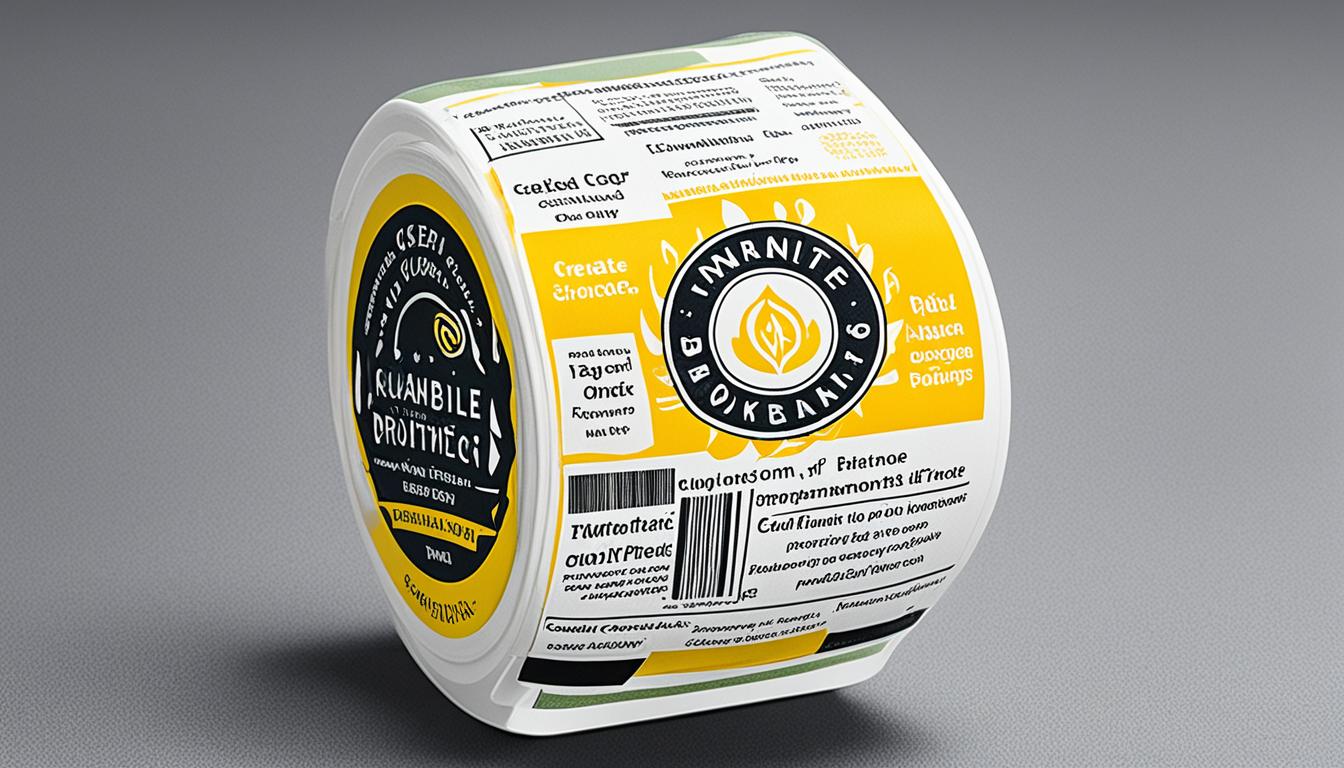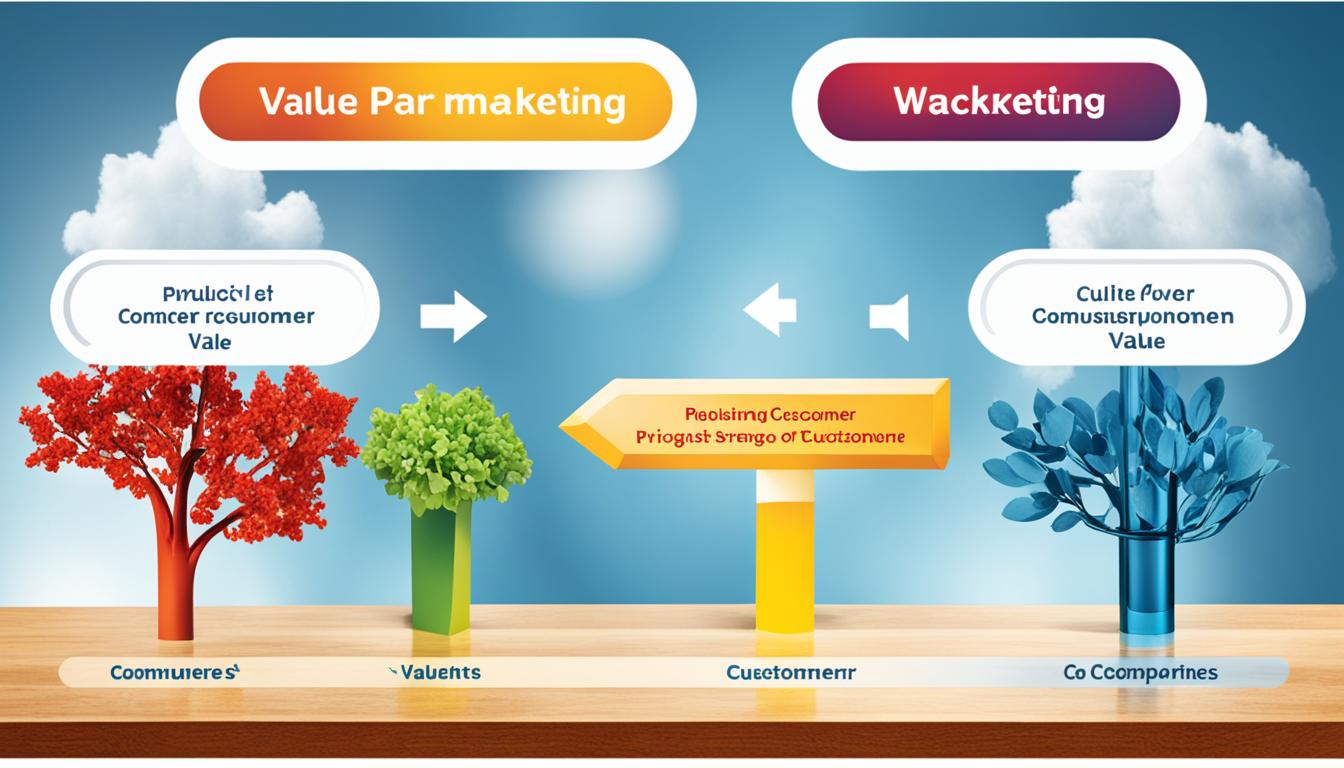Creating a strong digital marketing portfolio is crucial for individuals seeking jobs, changing careers, or working as freelancers in the marketing industry. Your portfolio serves as a showcase of your skills, achievements, and personal brand. In this article, we will explore real-world marketing portfolio examples to inspire and guide you in creating an impressive portfolio of your own.
Whether you are a seasoned professional or just starting out in the field of marketing, having a well-crafted portfolio is essential. A marketing portfolio is a comprehensive collection of materials and documents that highlight your skills, strategies, and strengths as a marketer. It is tangible evidence of your capabilities that allows potential clients or employers to evaluate your suitability for their needs.
When building your marketing portfolio, include a variety of materials that demonstrate your skills and achievements. This can include examples of marketing campaigns, social media content, website designs, branding materials, market research reports, and more. Don’t forget to incorporate testimonials, certifications, and personal achievements to further enhance your credibility.
Key Takeaways:
- A well-designed marketing portfolio is essential for marketing professionals seeking new opportunities.
- Your marketing portfolio should showcase your skills, achievements, and personal brand.
- Include a variety of materials that demonstrate your marketing capabilities, such as campaigns, social media content, and branding materials.
- Testimonials, certifications, and personal achievements add credibility to your portfolio.
- Regularly update and refine your marketing portfolio to keep it relevant and impactful.
Why a Marketing Portfolio is Important
A marketing portfolio plays a crucial role in showcasing your skills, demonstrating your capabilities, and highlighting your expertise in the field of marketing. It is a comprehensive collection of materials and documents that serve as tangible evidence of your marketing strategies, achievements, and talents.
Having a well-crafted marketing portfolio can provide numerous benefits, allowing you to stand out from the competition and land new opportunities. Here are some of the key reasons why a marketing portfolio is important:
- Showcasing Marketing Skills: A marketing portfolio allows you to showcase your skills in various areas of marketing, such as branding, social media management, content creation, market research, and more. By presenting examples of your work, clients and employers can assess your abilities and determine if you are the right fit for their needs.
- Demonstrating Marketing Capabilities: Your portfolio serves as a demonstration of your marketing capabilities across different platforms and channels. Whether it’s creating engaging social media campaigns, designing attractive websites, or developing effective marketing strategies, your portfolio provides concrete evidence of your expertise.
- Building Trust and Credibility: A well-curated marketing portfolio helps build trust and credibility with potential clients and employers. It shows that you have successfully executed marketing initiatives in the past, delivering results and achieving objectives. This builds confidence and increases your chances of securing new projects or job opportunities.
- Standing Out from the Competition: In a competitive industry like marketing, a portfolio allows you to differentiate yourself from other professionals. It gives you the opportunity to highlight unique projects, innovative strategies, and successful campaigns, demonstrating why you are the best choice for a marketing role.
- Attracting New Opportunities: With a strong marketing portfolio, you can attract new clients, freelance projects, or job offers. Potential employers and clients often request portfolios to assess a candidate’s suitability for their specific marketing needs. By showcasing your skills and achievements, you increase the likelihood of being selected for exciting opportunities.
Overall, a marketing portfolio is an essential tool for marketing professionals. It not only allows you to exhibit your marketing skills and capabilities but also proves your credibility and increases your chances of landing new and exciting opportunities in the field.
What to Include in a Marketing Portfolio
When creating a marketing portfolio, it’s important to include a variety of materials that showcase your skills and achievements. Your portfolio should serve as a comprehensive representation of your marketing capabilities and provide potential clients or employers with an insight into your expertise.
To make your marketing portfolio impactful and visually appealing, consider including the following elements:
- Examples of marketing campaigns: Include samples of successful marketing campaigns you have executed, highlighting the objectives, strategies, and measurable results.
- Social media content: Showcase your skills in managing social media platforms by including examples of engaging posts, community management, and social media campaigns.
- Website designs: Display your ability to create visually appealing and user-friendly websites by including screenshots or links to websites you have designed.
- Branding materials: Showcase your branding and design skills by including examples of logos, brand guidelines, and promotional materials you have developed.
- Market research reports: Highlight your analytical and research skills by including market research reports that demonstrate your ability to gather insights and make data-driven decisions.
- Other relevant marketing collateral: Depending on your expertise, include any other marketing materials that are relevant to your portfolio, such as email marketing campaigns, content marketing samples, or print advertisements.
Showcasing your achievements and credibility
In addition to the materials mentioned above, you should also consider including testimonials, certifications, and personal achievements in your marketing portfolio. Testimonials from satisfied clients or employers can provide social proof and demonstrate the value you bring to your work. Certifications in marketing or related fields can further enhance your credibility and showcase your commitment to professional development. Personal achievements, such as awards or recognition, can also help you stand out from the competition.
By including a diverse range of materials and demonstrating your achievements and credibility, your marketing portfolio will effectively showcase your skills, expertise, and potential value to prospective clients or employers.
Examples of Impressive Marketing Portfolios
To provide inspiration and guidance, we have gathered a selection of impressive marketing portfolio examples from various professionals in the industry. These portfolios display a range of styles, designs, and content formats that effectively showcase the individual’s marketing skills and expertise. By analyzing these examples, you can gain insight into what makes a standout marketing portfolio and apply similar principles to your own portfolio.
Check out the following online marketing portfolios to see how these creative individuals have successfully showcased their talents:
1. John Smith Marketing
John Smith’s marketing portfolio is a prime example of clean design and elegant presentation. The homepage features a visually captivating slideshow of his best marketing campaigns, each accompanied by a brief overview of the campaign’s success and his role in its execution. The navigation bar at the top makes it easy to explore different sections, including social media marketing, content creation, and branding.
2. Mary Johnson Digital
Mary Johnson’s online marketing portfolio stands out with its innovative and interactive layout. The homepage features a dynamic grid layout with images and excerpts from her most impressive projects. Visitors can click on each project to delve deeper and explore the specific strategies and results. The portfolio also includes a blog section where Mary shares her insights and expertise.
3. David Thompson Creative
David Thompson’s creative marketing portfolio showcases his skills across various mediums, including print, digital, and experiential marketing. The homepage features a visually stunning collage of his best works, with each image linking to a detailed case study. David’s portfolio effectively communicates his versatility and ability to think outside the box.
These are just a few among countless exceptional marketing portfolios out there. Analyzing a wide range of examples will expand your creative horizons and help you curate a unique and impactful online marketing portfolio that captures the attention of potential clients or employers.
Elements of Effective Marketing Portfolios
Effective marketing portfolios are characterized by design principles that create visually appealing and engaging experiences for viewers. By incorporating these principles, marketers can captivate their audience and leave a lasting impression. Here are some key elements to consider when designing your marketing portfolio:
Clean and Professional Designs
A clean and professional design sets the tone for your portfolio and establishes credibility. Use a consistent color scheme, typography, and layout that aligns with your personal branding. Avoid clutter and unnecessary distractions, allowing your work to take center stage.
Clear Messaging
Communicate your marketing capabilities and strengths clearly through well-crafted messaging. Use concise and impactful language to describe your projects, campaigns, and achievements. Clearly articulate your value proposition and unique selling points to stand out from the competition.
Well-Organized Content Sections
Organize your portfolio into logical and easily navigable sections. Structure your content based on themes, project types, or skill sets, making it convenient for viewers to find specific information. Use headings, subheadings, and bullet points to create a hierarchy and guide the reader’s attention.
User-Friendly Layout
Create a user-friendly layout that enhances the browsing experience. Ensure that your portfolio is responsive, optimized for various devices. Consider implementing a clear navigation menu, search function, and breadcrumb trails to help users navigate through your portfolio effortlessly.
Multimedia Elements
Enhance the impact of your marketing portfolio by incorporating multimedia elements. Utilize images, videos, and interactive features to showcase your work, engage the audience, and provide interactive experiences. Multimedia elements can be particularly effective in capturing attention and conveying complex information.
By implementing these design principles, you can create an engaging and visually appealing marketing portfolio that effectively captivates your viewers and highlights your marketing expertise.

| Design Principles | Description |
|---|---|
| Clean and Professional Designs | Create a visually appealing and credible portfolio with a consistent design, color scheme, typography, and layout. |
| Clear Messaging | Clearly communicate your marketing capabilities and strengths through impactful language and concise descriptions. |
| Well-Organized Content Sections | Organize your portfolio into logical sections, making it easy for viewers to find and navigate through your work. |
| User-Friendly Layout | Ensure a user-friendly layout that is responsive, optimized for various devices, and features clear navigation. |
| Multimedia Elements | Incorporate images, videos, and interactive features to engage viewers and enhance the impact of your portfolio. |
How to Create Your Own Marketing Portfolio
Creating your own marketing portfolio involves several steps. Follow this guide to build a visually appealing and impactful portfolio that showcases your marketing expertise.
Step 1: Choose a Platform
Start by selecting a platform to host your portfolio website. Popular options include Wix, Squarespace, and WordPress. Consider your budget, design options, and ease of use when making your decision.
Step 2: Outline Your Site Map
Before diving into the design process, outline the structure of your portfolio website. Determine the main sections and pages you want to include, such as your bio, projects, skills, and contact information. This will help you organize your content effectively.
Step 3: Write Compelling Content
Create engaging content that highlights your skills, achievements, and experiences. Craft a compelling bio that showcases your unique value proposition and tailor your project descriptions to emphasize your marketing strategies and results. Use a professional tone and make sure your writing is error-free.
Step 4: Gather High-Quality Examples
Collect your best marketing work samples, such as campaigns, social media content, website designs, and any other relevant materials that demonstrate your skills. Ensure that the examples you choose are of high quality and represent your capabilities effectively.
Step 5: Design for Impact
Create a visually appealing portfolio by utilizing clean and professional designs. Use consistent branding elements, appropriate color palettes, and engaging visuals to make your portfolio stand out. Consider the overall user experience and ensure that your portfolio is easy to navigate.
| Key Elements of a Marketing Portfolio | Description |
|---|---|
| High-quality content | Select examples that demonstrate your capabilities and achievements in marketing. |
| Visual appeal | Create a visually enticing design that captures the attention of potential clients or employers. |
| Organization | Arrange your portfolio in a structured and easy-to-navigate manner to enhance user experience. |
| Coherent branding | Use consistent branding elements to showcase your personal brand and create a professional image. |
Step 6: Seek Feedback
Once your portfolio is ready, ask for feedback from trusted peers or mentors in the marketing industry. They can provide valuable insights and suggestions to further improve your portfolio. Implement their feedback to ensure your portfolio effectively showcases your marketing expertise.
By following these steps, you can create a compelling marketing portfolio that impresses potential clients or employers and helps you stand out in the competitive marketing industry.
Tips for Crafting a Standout Marketing Portfolio
Creating a marketing portfolio that stands out from the competition is crucial for showcasing your skills and attracting potential clients or employers. Here are some tips to help you optimize your marketing portfolio:
1. Clearly Define Your Brand and Target Audience
To make a powerful impression, clearly define your personal brand and identify your target audience. Your portfolio should reflect your unique value proposition and cater to the needs and interests of your desired audience.
2. Use a Clean and Professional Design
Choose a clean and professional design for your portfolio website that aligns with your personal branding. Ensure your website is visually appealing, easy to navigate, and showcases your work effectively. Use high-quality images and maintain consistency throughout the design.
3. Showcase a Variety of Projects
Include a diverse range of projects in your portfolio to demonstrate your versatility and expertise. Showcase different types of marketing campaigns, social media strategies, website designs, and other relevant work samples. This will give potential clients or employers a comprehensive overview of your capabilities.
4. Highlight Tangible Results and Metrics
Whenever possible, highlight tangible results and metrics associated with your marketing projects. This could include increases in website traffic, engagement rates, conversion rates, or revenue generated. Quantifiable results add credibility to your portfolio and demonstrate your ability to drive successful outcomes.
5. Regularly Update Your Portfolio
Keep your portfolio up to date by regularly adding new examples and removing outdated content. This shows that you are active in your field and continuously evolving your skills. Additionally, ensure that all links and contact information within your portfolio are functioning correctly.
6. Keep Your Portfolio Organized and Easy to Navigate
Organize your portfolio in a logical and easy-to-navigate manner. Use clear headings, sections, and labels to guide visitors through your work. Consider creating a table of contents or categorizing your projects for improved navigation.
By following these best practices, you can optimize your marketing portfolio and make a lasting impression on potential clients or employers.

| Marketing Portfolio Tips |
|---|
| Clearly define your brand and target audience |
| Use a clean and professional design |
| Showcase a variety of projects |
| Highlight tangible results and metrics |
| Regularly update your portfolio |
| Keep your portfolio organized and easy to navigate |
The Power of Testimonials in a Marketing Portfolio
Including testimonials from satisfied clients or employers is a powerful way to enhance your marketing portfolio. Testimonials provide social proof and demonstrate the value you have delivered to past clients. By leveraging testimonials in your portfolio, you can build trust and credibility with potential clients or employers.
Why Are Testimonials Important?
Client testimonials in marketing portfolios serve as endorsements of your skills and expertise. They provide evidence of your ability to deliver results and showcase the positive experiences others have had working with you. Testimonials add credibility to your portfolio and can increase the likelihood of landing new opportunities.
Selecting the Right Testimonials
When incorporating testimonials, it’s essential to select quotes that highlight specific achievements or positive experiences. Choose testimonials that align with the skills and expertise you want to showcase. Ensure that the testimonials are attributed to credible sources, such as well-known companies or individuals with influence in the industry. Consider incorporating testimonials into relevant sections of your portfolio to enhance their impact.
How to Display Testimonials
There are several ways to display testimonials in your marketing portfolio. You can include them as standalone quotes within your portfolio sections, or you can create a dedicated “Testimonials” section. Within the section, you can feature a collection of testimonials from different clients or employers. Alternatively, you can scatter testimonials throughout your portfolio, strategically placing them alongside relevant projects or achievements.
For example, you can create a table to display different testimonials, showcasing the client’s name, their position, and their quote. This table can be placed in a prominent position within your portfolio, such as on your homepage or a dedicated testimonials page. The table can help visually organize the testimonials and make them easy to read and digest.
| Client Name | Position | Testimonial |
|---|---|---|
| Elizabeth Johnson | Marketing Manager | “Working with [Your Name] was a game-changer for our business. Their strategic insights and innovative campaigns helped us achieve record-breaking results.” |
| Michael Thompson | CEO | “I highly recommend [Your Name] for any marketing project. Their professionalism, attention to detail, and ability to drive tangible results are unparalleled.” |
| Emily Adams | Digital Marketing Specialist | “[Your Name] is an exceptional marketer who consistently exceeds expectations. Their thorough market research and data-driven approach have been instrumental in our marketing success. |
Make Testimonials Authentic and Impactful
To make testimonials more authentic and impactful, consider including the client’s logo or photo alongside their testimonial. This visual element adds credibility and makes the testimonial more relatable. It’s also important to regularly update your testimonials as you complete new projects and receive additional feedback from clients or employers.
By leveraging the power of testimonials in your marketing portfolio, you can differentiate yourself from the competition and showcase the value you bring to your clients or employers. Testimonials provide social proof, build trust, and increase the chances of securing new opportunities in the marketing industry.
Showcasing Your Expertise in a Digital Marketing Portfolio
In today’s digital age, having a strong digital marketing portfolio is essential for demonstrating your expertise in the field. Whether you are a freelancer or a job seeker, a well-curated portfolio can help you stand out and attract potential clients or employers. To create an impactful digital marketing portfolio, consider incorporating the following best practices:
1. Include Examples of Successful Digital Marketing Campaigns
Showcase your ability to strategize, execute, and measure the success of digital marketing campaigns. Include case studies that highlight the objectives, target audience, tactics used, and measurable results achieved. This will demonstrate your practical skills and provide evidence of your ability to drive tangible outcomes for clients or organizations.
2. Highlight Your Social Media Strategies
Include examples of social media campaigns you have managed, highlighting your ability to create engaging content, grow a following, and drive conversions. Demonstrate your knowledge of various social media platforms and your ability to tailor strategies to reach different target audiences.
3. Showcase Your SEO Optimization Skills
Showcasing your understanding of search engine optimization (SEO) techniques is crucial in a digital marketing portfolio. Include examples of how you have optimized website content, improved organic search rankings, conducted keyword research, and implemented on-page and off-page SEO strategies.
4. Demonstrate Content Creation Abilities
Content marketing is an integral part of digital marketing. Showcase your ability to create compelling and valuable content that resonates with target audiences. Include examples of blog posts, articles, infographics, videos, or any other content formats you have successfully created and distributed.
5. Highlight Your Knowledge of Industry Trends and Technologies
Demonstrate your commitment to staying ahead in the fast-paced digital marketing landscape by showcasing your awareness of industry trends and your knowledge of the latest tools and technologies. This can include certifications, courses, or membership in professional associations that signify your dedication to continuous learning and professional growth.
By incorporating these best practices and showcasing your expertise in various digital marketing areas, you can create a compelling portfolio that highlights your skills and attracts potential clients or employers. Remember to regularly update your portfolio with new examples and tailor it to suit the specific needs and preferences of your target audience.
Conclusion
Building a strong marketing portfolio is a crucial step in establishing your credibility and showcasing your skills in the competitive marketing industry. By following the tips and examples provided in this article, you can create an impressive portfolio that effectively highlights your expertise and attracts potential clients or employers.
Remember to regularly update and refine your portfolio to ensure it remains relevant and impactful throughout your marketing career. As you gain new experiences and skills, incorporate them into your portfolio to showcase your growth and versatility.
Invest time in crafting a clean and professional design that aligns with your personal branding. From creating engaging content to organizing your work samples effectively, every element contributes to leaving a lasting impression on your audience.
Your marketing portfolio is a reflection of your abilities and achievements, so invest the necessary effort to make it stand out. With a well-constructed portfolio, you can confidently demonstrate your expertise and land the opportunities you desire in the dynamic field of marketing.
FAQ
Why is having a marketing portfolio important?
Having a marketing portfolio is important because it allows you to showcase your skills, strategies, and achievements to potential clients or employers. It provides tangible evidence of your capabilities and helps you stand out from the competition.
What should I include in my marketing portfolio?
Your marketing portfolio should include a variety of materials that showcase your skills and achievements, such as marketing campaigns, social media content, website designs, branding materials, market research reports, and testimonials. Including certifications and personal achievements can also enhance your portfolio.
Can you provide examples of impressive marketing portfolios?
Yes, we have gathered a selection of marketing portfolio examples from professionals in the industry. These portfolios display a range of styles, designs, and content formats that effectively showcase the individual’s marketing skills and expertise.
What are the elements of effective marketing portfolios?
Effective marketing portfolios share elements such as clean and professional designs, clear messaging, well-organized content sections, and user-friendly layouts. Incorporating multimedia elements like images, videos, and interactive features can also enhance the impact of a marketing portfolio.
How do I create my own marketing portfolio?
To create your own marketing portfolio, choose a platform to host your portfolio website, outline your site map, write compelling content, gather high-quality examples of your work, and organize them in a visually appealing and easy-to-navigate manner. Seek feedback from peers or mentors to ensure your portfolio effectively showcases your marketing expertise.
What are some tips for crafting a standout marketing portfolio?
To craft a standout marketing portfolio, clearly define your brand and target audience, use a clean and professional design, showcase a variety of projects, highlight tangible results and metrics, regularly update your portfolio with new examples, and keep it organized and easy to navigate.
How can testimonials enhance my marketing portfolio?
Testimonials from satisfied clients or employers provide social proof and demonstrate the value you have delivered. By incorporating testimonials that highlight specific achievements or positive experiences, you can further enhance your credibility and attract potential clients or employers.
How should I showcase my expertise in a digital marketing portfolio?
In a digital marketing portfolio, include examples of successful digital marketing campaigns, social media strategies, SEO optimization, content creation, and other relevant skills. Highlight your knowledge of industry trends, tools, and technologies to demonstrate your ability to stay ahead in the fast-paced digital marketing landscape.
Why is it important to regularly update and refine my marketing portfolio?
Regularly updating and refining your marketing portfolio ensures it remains relevant and impactful throughout your career. It allows you to showcase your latest work and stay up-to-date with industry trends, keeping potential clients or employers engaged and interested in your portfolio.
How does having a strong marketing portfolio benefit job seekers, career switchers, and freelancers in the marketing industry?
A strong marketing portfolio helps job seekers, career switchers, and freelancers in the marketing industry by showcasing their skills and achievements to potential employers or clients. It increases their chances of landing new opportunities, standing out from competitors, and establishing their credibility in the competitive marketing industry.







